How to machine a bushing?
Bearings and Bushings for the Future: Precision and Customization: Our company, in bearing engineering with decades of experience, designs and develops high-precision self-lubricating bronze bearings & plain bushes. We offer a wide array of sliding bearings tailored to meet specific needs. Renowned for our expertise in custom bronze bushing and slide plate solutions, we provide an expansive selection of bushing metal alloys. Contact us today to benefit from unparalleled services at competitive prices.
How to machine a bushing?
How to Machine a Self-lubricating Bushing?
Self-lubricating bearings, also known as oil-free or maintenance-free bearings, are designed to operate without additional lubrication. They are commonly made of materials such as bronze, graphite, or plastic, which have inherent lubricating properties. Here are the steps to machine a self-lubricating bearing bushing:
Custom Size Bush bearings
Supplier
Looking for a reliable supplier of self-lubricating bushings? Look no further than our company! As a leading provider of high-quality self-lubricating bushings, we have the expertise and experience to meet all of your needs.
professional
Sleeve Bush
Our self-lubricating bushings are designed to provide superior performance and long-lasting durability in a wide range of applications. Made from high-strength metal polymers, our bushings offer exceptional wear resistance, low friction, and self-lubricating properties, making them ideal for use in high-stress and high-speed applications.
Metal Polymer Bearings Bush
Focus
With a wide variety of sizes and materials to choose from, we can provide the perfect solution for your specific needs. Whether you’re looking for a custom design or a standard bushing, we have the expertise and capabilities to deliver the high-quality products you need.
Custom Size
Self-lubricating Bearing washer
In addition to our top-quality products, we also offer exceptional customer service and support. Our team of experts is available to answer any questions you may have and provide guidance and advice on selecting the right bushing for your application.

Design Custom Bearings Made From High-Strength Metal Polymers
Designing custom bearings made from high-strength metal polymers requires expertise in materials science, engineering, and manufacturing processes. It’s important to work with an experienced manufacturer or engineer who can guide you through the design and production process to ensure optimal performance and longevity of the custom bearing.
Select the Self-Lubricating Bearing material
Determine the requirements: The first step is to determine the specific requirements for the custom bearing. Consider the operating conditions, such as load, speed, temperature, and environmental factors, as well as any specific design requirements.
Select the material: Choose a high-strength metal polymer material that is suitable for the application. There are several types of metal polymers available, each with its own properties and advantages, such as high strength, corrosion resistance, and self-lubrication.
Other metal polymers, such as acetal and nylon reinforced with metal fibers or particles, can also be used for high-strength bushings. The specific material chosen depends on the specific requirements of the application, such as load, speed, temperature, and environmental factors. It’s important to consult with a bearing manufacturer or engineer to determine the best material for your specific application.
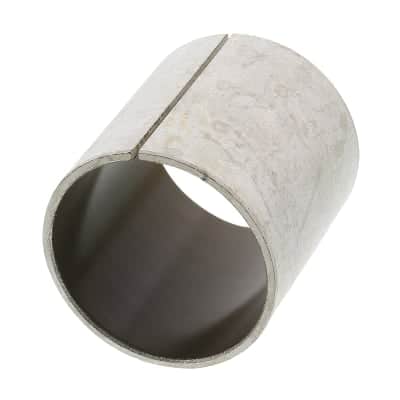
taxation planning
Eiusmod tempor incididunt ipsum ut labore dolore magna aliqua. Ut enim minim veniam duisy ipsum sed quis.
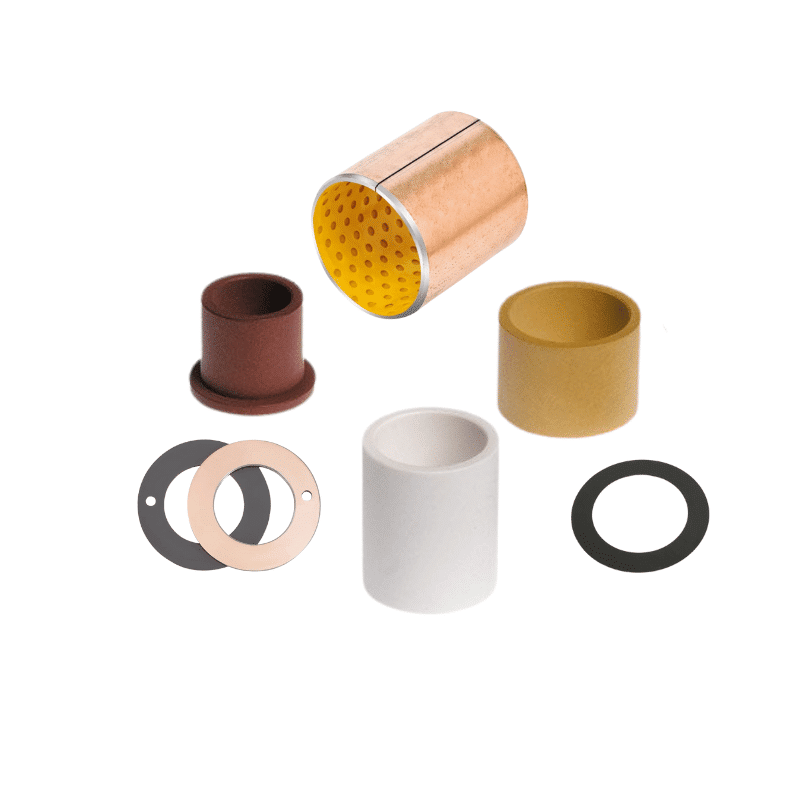
Designing custom bearings made from high-strength metal polymers
Determine the dimensions: Determine the appropriate dimensions for the custom bearing, including the inner and outer diameters, width, and any other required features such as flanges or grooves.
Design the bearing: Use CAD software to design the custom bearing. Consider the specific requirements and properties of the chosen material, as well as any manufacturing considerations such as tolerances and production methods.
Prototype and test: Create a prototype of the custom bearing and perform testing to ensure that it meets the required specifications and performance standards. If necessary, make any adjustments or revisions to the design.
Production: Once the design has been finalized and tested, the custom bearing can be manufactured using the chosen production method, such as injection molding or machining.
Self-Lubricating Bearings Metal Polymer bushing
It’s Important To Note That Self-Lubricating Bearings Typically Require Precise Machining To Ensure Proper Operation. It May Be Helpful To Consult With A Bearing Manufacturer Or Engineer To Ensure That Your Bushing Is Machined To The Appropriate Specifications.
So why wait? Contact us today to learn more about our self-lubricating bushings and discover how we can help you improve the performance and reliability of your equipment.
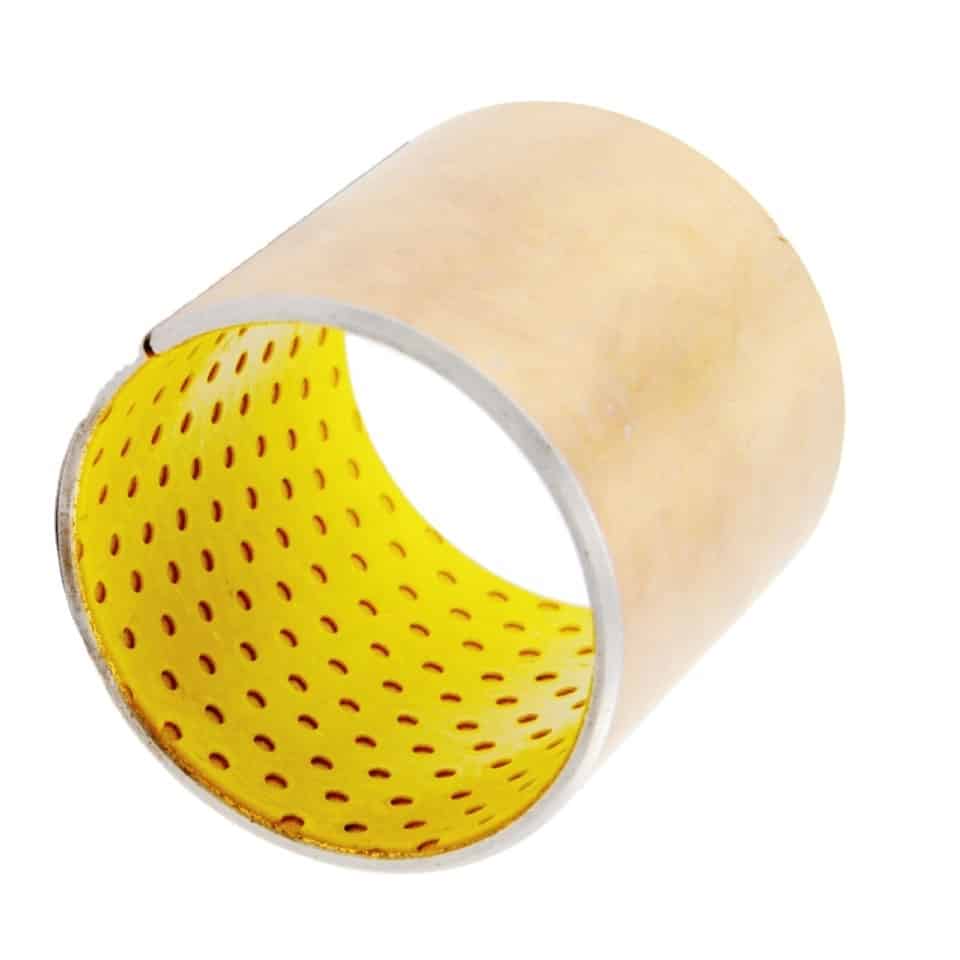
We Deliver Bearings Bush At Your Address
How are self-lubricating bearing bushings installed?
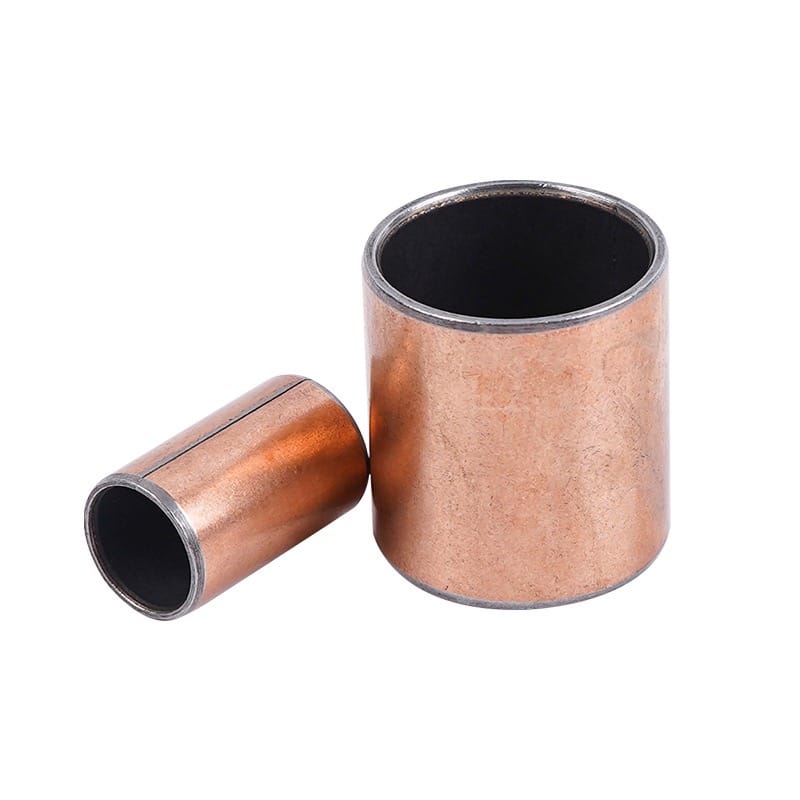
Self-lubricating bearing bushings are designed to be installed without additional lubrication or maintenance. Here are the general steps to install a self-lubricating bearing bushing:
Ensure proper fit: Before installation, make sure the bushing has the correct size and dimensions for the application. It should fit snugly into the housing or bore.
Clean the housing or bore: The housing or bore should be clean and free of debris, dirt, and other contaminants. Use a cleaning agent if necessary.
Apply a light coating of lubricant: Although self-lubricating bushings don’t require additional lubrication, a light coating of a compatible lubricant can help with the initial installation. Apply the lubricant evenly around the housing or bore.
Insert the bushing: Carefully insert the bushing into the housing or bore. It should slide in smoothly without any resistance.
Secure the bushing: Once the bushing is in place, make sure it is secured properly. This may involve using a retaining clip or applying pressure to the housing or bore.
Test the installation: After installation, test the bushing to ensure it is functioning properly. It should move smoothly without any binding or resistance.
It’s important to follow the manufacturer’s guidelines for installation and maintenance of self-lubricating bearings. If you have any questions or concerns, it may be helpful to consult with a bearing manufacturer or engineer.
Self-lubricating Maintenance-Free bearing supplier
What type of bearings bushing should I get?
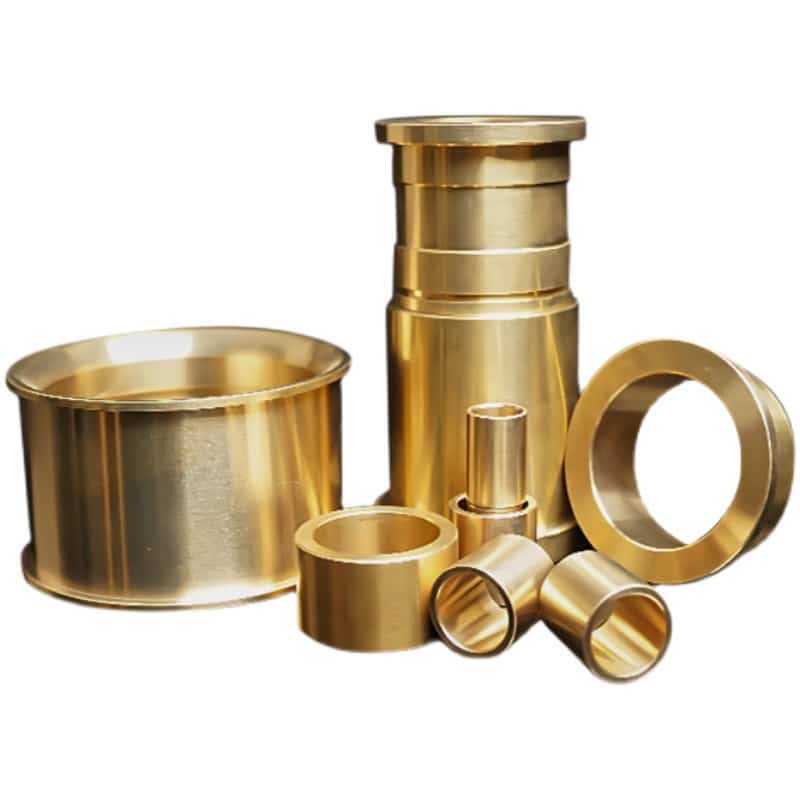
The type of bearing bushing you should get depends on the specific application and operating conditions. Here are some factors to consider when selecting a bearing bushing:
- Load capacity: The bearing bushing should be able to handle the weight and forces involved in the application. Consider the static and dynamic loads that will be applied, as well as any shock or impact forces.
- Operating temperature: The bearing bushing should be able to withstand the operating temperature range of the application without experiencing significant wear or deformation. Consider the temperature range and any fluctuations that may occur.
- Speed: The bearing bushing should be able to handle the rotational speed of the application without excessive wear or noise. Consider the RPM range and any acceleration or deceleration forces.
- Environment: The bearing bushing should be able to withstand the environmental conditions of the application, such as exposure to moisture, chemicals, or abrasive particles. Consider the specific operating environment and any potential contaminants.
- Maintenance requirements: The bearing bushing should be appropriate for the desired maintenance schedule of the application. Self-lubricating bushings may be preferable for applications where maintenance is difficult or infrequent.
Ultimately, it’s important to consult with a bearing manufacturer or engineer to select the appropriate bearing bushing for your specific application. They can help you evaluate the operating conditions and select the best type of bushing for your needs.
Self-lubricating flange bearing and collar bushes supplier
How to calculate load on a bearing Bushings?
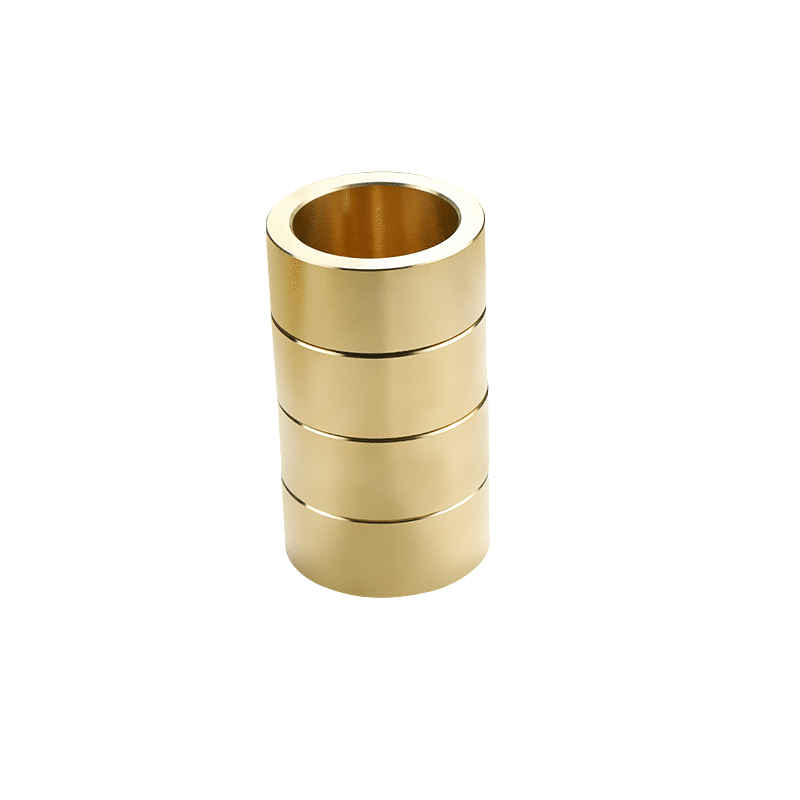
To calculate the load on a bearing bushing, you need to consider the following factors:
Applied load: The applied load is the force or weight that is supported by the bearing bushing. This can be calculated by considering the weight of the supported object, any external forces or torques, and any acceleration or deceleration forces that may be present.
Load distribution: The load distribution refers to how the load is distributed across the bearing bushing. This can vary depending on the shape and size of the bushing, as well as the orientation of the load.
Frictional forces: The frictional forces between the bushing and the shaft or housing also need to be considered. These can affect the load capacity and wear of the bushing.
Operating conditions: The operating conditions, such as speed, temperature, and lubrication, can also affect the load capacity of the bearing bushing.
To calculate the load on a bearing bushing, you can use the following formula:
P = (F x L)/(π x d x L10)
Where:
P = Load on bearing bushing (psi or N/mm²)
F = Applied load (lbs or N)
L = Length of bearing bushing (in or mm)
d = Diameter of bearing bushing (in or mm)
L10 = Rated life of bearing bushing (in revolutions)
The rated life of the bearing bushing can typically be obtained from the manufacturer’s specifications. It represents the number of revolutions that the bushing can withstand before a certain percentage of failures occur.
It’s important to note that this formula provides an approximate estimate of the load on the bearing bushing and may not account for all factors affecting the bushing’s performance. It’s recommended to consult with a bearing manufacturer or engineer to determine the appropriate bearing bushing for your specific application.
Self-lubricating flange bearing and collar bushes supplier
How to input bearings bushing in CAD?
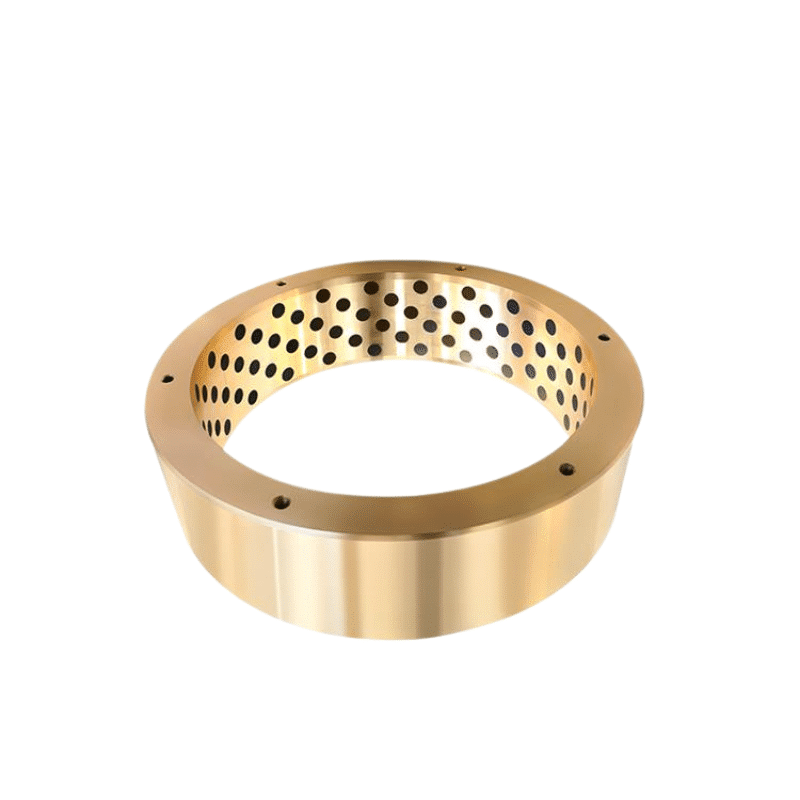
To input a bearing bushing into a CAD (computer-aided design) software, follow these general steps:
Obtain the manufacturer’s specifications: Gather the manufacturer’s specifications for the bearing bushing, including the dimensions, tolerances, and other relevant details.
Create a new part or assembly file: Open a new part or assembly file in your CAD software.
Select the appropriate sketch tool: Choose the appropriate sketch tool for the shape of the bushing, such as a circle or rectangle.
Sketch the basic shape: Sketch the basic shape of the bushing using the selected tool. Use the manufacturer’s specifications to ensure accuracy.
Add features: Add any additional features, such as grooves or chamfers, using the appropriate tools.
Apply tolerances: Apply the appropriate tolerances to the dimensions of the bushing to ensure proper fit.
Save the file: Save the file with an appropriate name and file type.
If you are creating an assembly, you can insert the bearing bushing into the assembly by selecting the appropriate insertion tool and placing the bushing in the desired location.
It’s important to note that the specific steps for inputting a bearing bushing into a CAD software can vary depending on the software and the specific application. Consult the software’s documentation or online resources for more detailed instructions.
Self-lubricating sleeve bearing manufacturer
How to measure self-lubricating bearing friction?
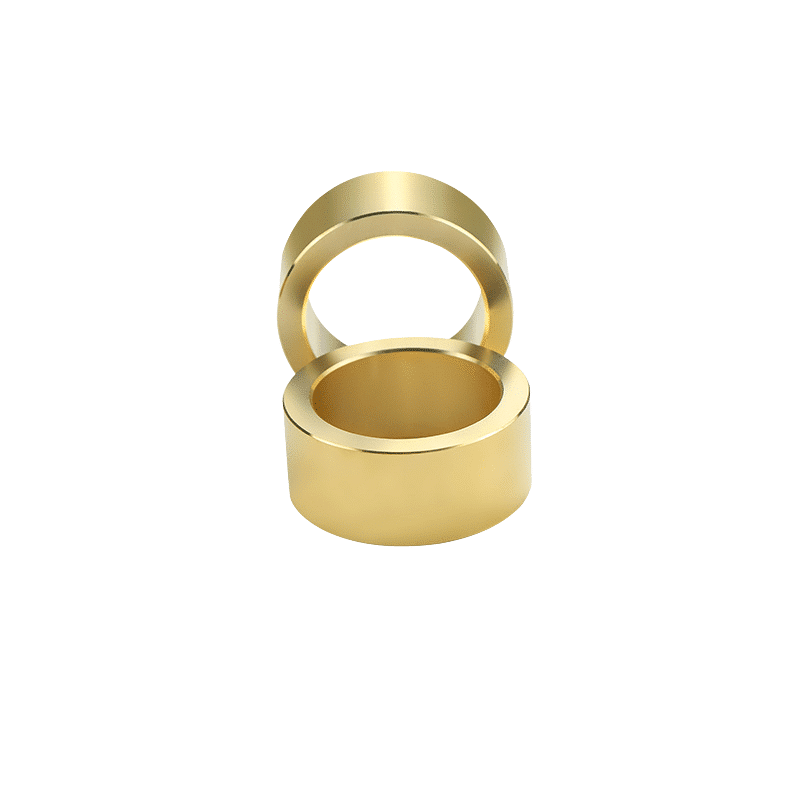
Measuring the friction of a self-lubricating bearing bushing can help you determine its performance and identify any issues that may affect its functionality. Here are the steps to measure self-lubricating bearing friction:
Set up the test apparatus: Set up a test apparatus to measure the friction of the bearing bushing. This may involve mounting the bushing onto a shaft or housing and applying a load to the bushing.
Measure the input torque: Use a torque sensor to measure the input torque required to rotate the shaft or housing. This represents the force required to overcome the friction of the bushing.
Measure the output torque: Measure the output torque of the shaft or housing using a torque sensor. This represents the force applied to the output of the bushing.
Calculate the coefficient of friction: Calculate the coefficient of friction using the following formula:
µ = output torque / input torque
Where µ is the coefficient of friction.
The coefficient of friction represents the ratio of the output torque to the input torque, and is a measure of the amount of friction generated by the bearing bushing. A lower coefficient of friction indicates less friction and better performance.
It’s important to note that the specific steps for measuring self-lubricating bearing friction may vary depending on the specific application and testing equipment. It’s recommended to consult with a bearing manufacturer or engineer to determine the appropriate testing procedures for your specific application.
Self-lubricating sleeve bearing manufacturer
What type of self-lubricating bearing should be used for axial motion?
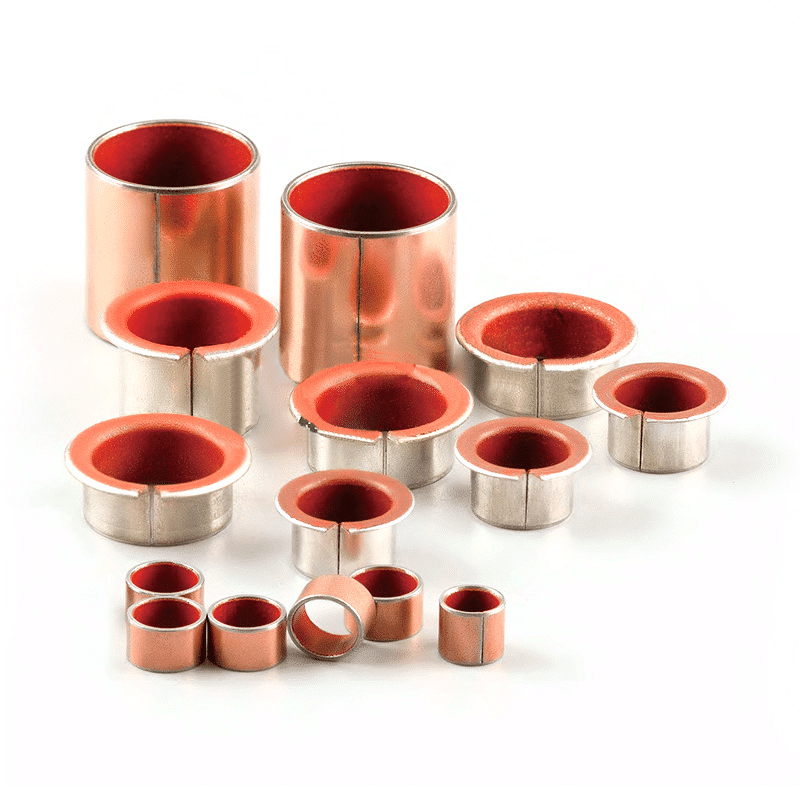
When selecting a self-lubricating bearing for axial motion, there are several options to consider depending on the specific application and operating conditions. Here are some types of self-lubricating bearings commonly used for axial motion:
Self-lubricating thrust ball bearings: These bearings are designed to handle axial loads in a single direction and are typically used for low to moderate speed applications. They are made of materials such as bronze, plastic, or graphite, which have inherent lubricating properties.
Self-lubricating thrust roller bearings: These bearings are similar to thrust ball bearings, but can handle higher axial loads and can also support radial loads. They can be made of materials such as bronze, plastic, or graphite, and may incorporate a PTFE (polytetrafluoroethylene) coating for additional lubrication.
Self-lubricating cylindrical roller bearings: These bearings consist of cylindrical rollers arranged in a single row or double row configuration, and can handle high axial loads and some radial loads. They can be made of materials such as bronze, plastic, or graphite, and may incorporate a PTFE coating for additional lubrication.
Self-lubricating spherical plain bearings: These bearings can handle both axial and radial loads, and are designed to withstand high impact and vibration applications. They are made of materials such as bronze, plastic, or graphite, and may incorporate a PTFE coating or liner for additional lubrication.
It’s important to consider the specific requirements of your application when selecting a self-lubricating bearing for axial motion, such as the direction and magnitude of the axial load, the speed and precision requirements, and the environmental conditions. Consult with a bearing manufacturer or engineer to determine the best type of self-lubricating bearing for your specific application.
Self-lubricating sleeve bearing manufacturer

Solutions For Every Industry
Searching for Dependable Bushing Solutions? viiplus Has What You Need.

Design Guides, Materials
Bushing design, Comprehensive design manuals covering a range of self-lubricating materials used in all of viiplus’s manufacturing processes.

Technical Guides
Manufacturing On Demand, Technical Guides For Machining Design. Discover the latest in metal alloys, materials, and design tips for manufacturing custom machined and self-lubricating bearing parts.

Get Instant Quote
To receive your instant quote, simply upload your drawing file and choose your production process & bushing material.

Prototyping, Place Order
After you place your order, we will start the production process. You will receive updates when your order has completed production and is ready to be dispatched.

Receive Your custom Parts
We provide precision-inspected high-quality parts, packing lists and documents, and delivery tracking.

